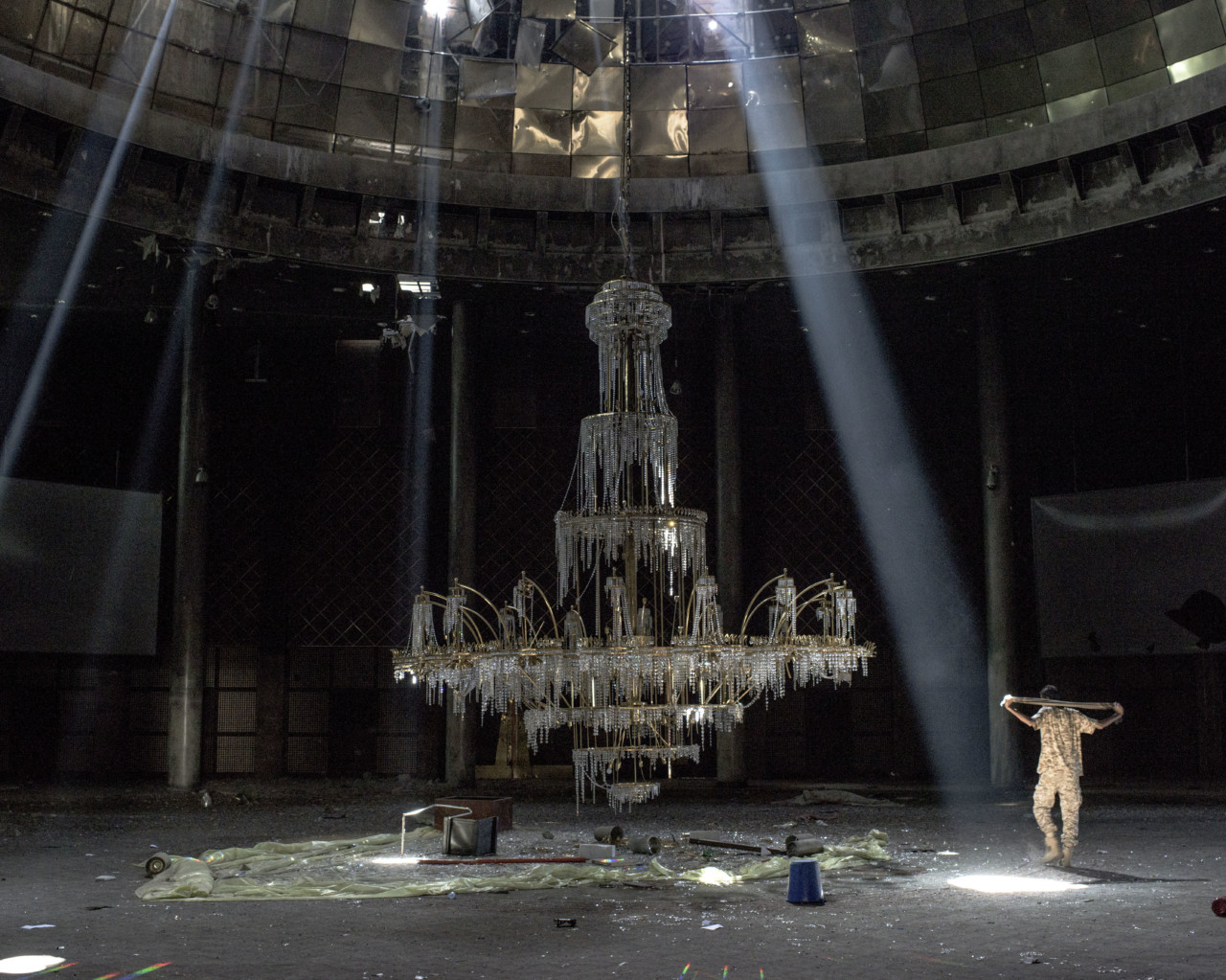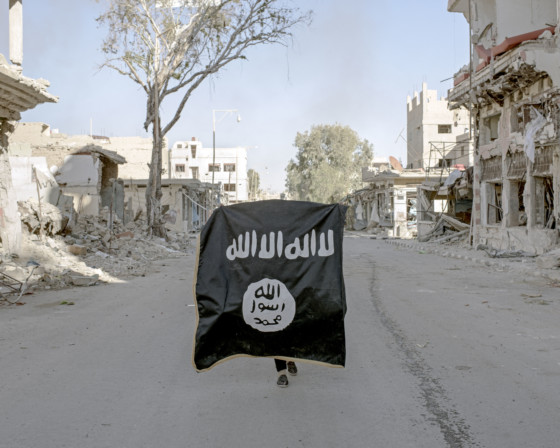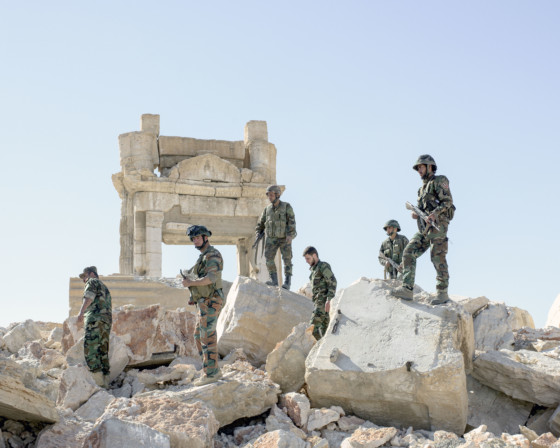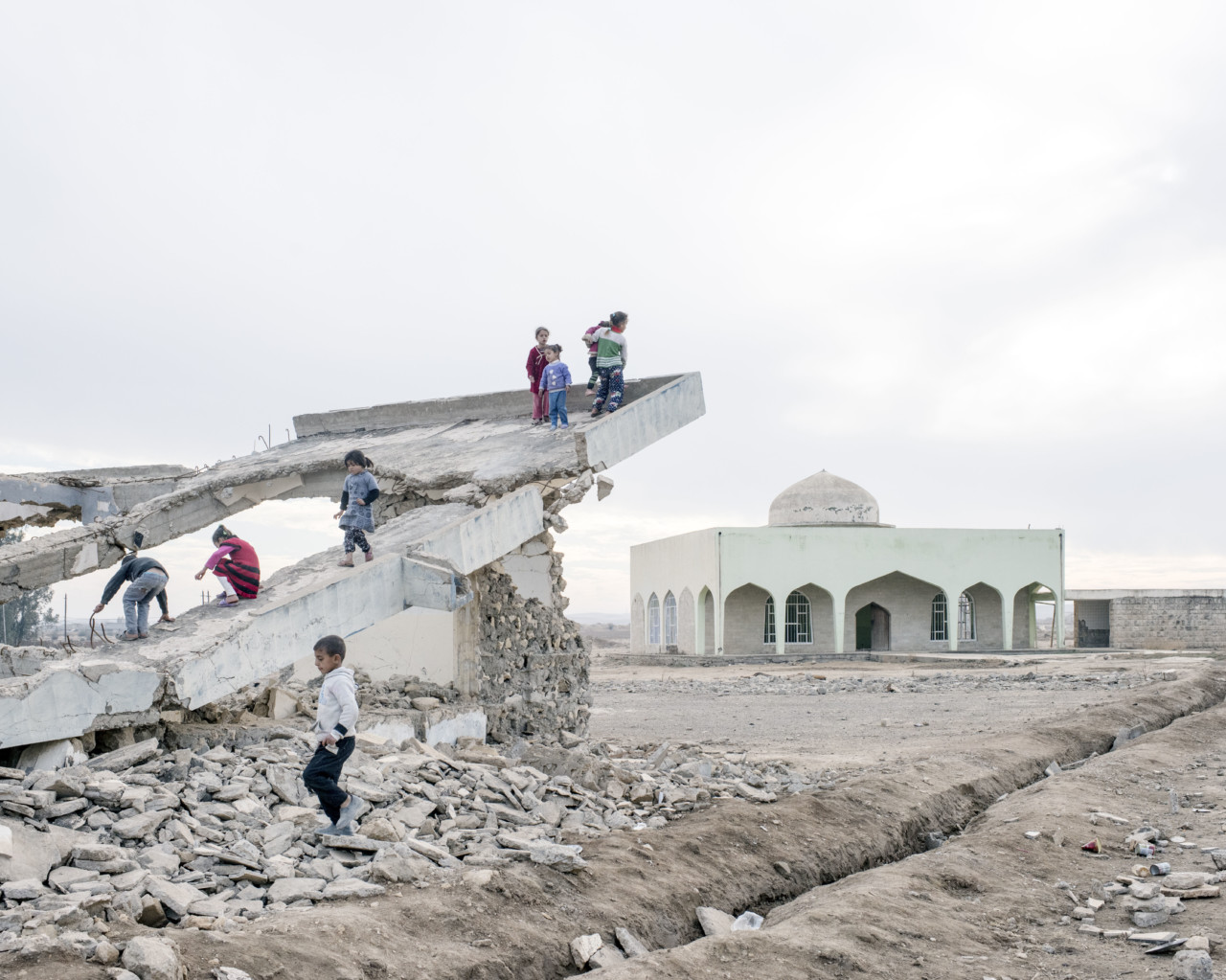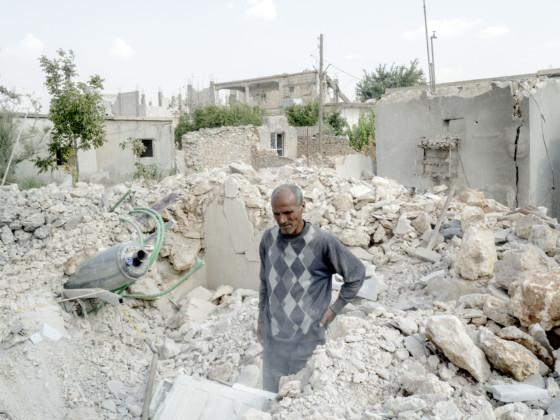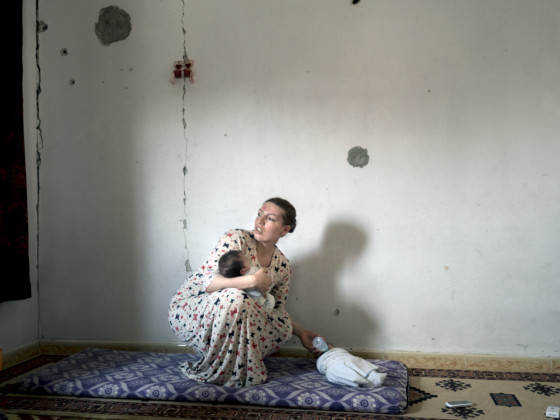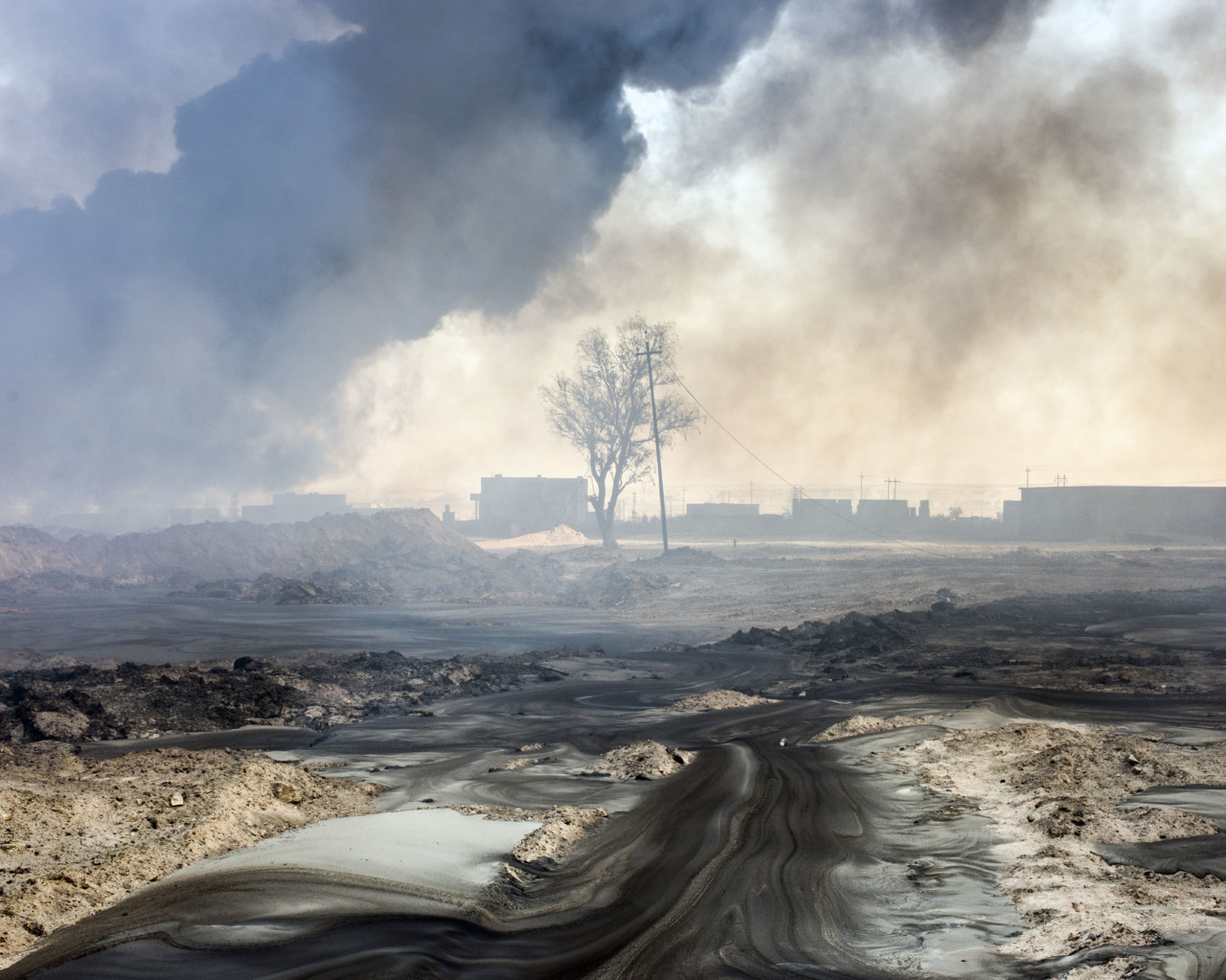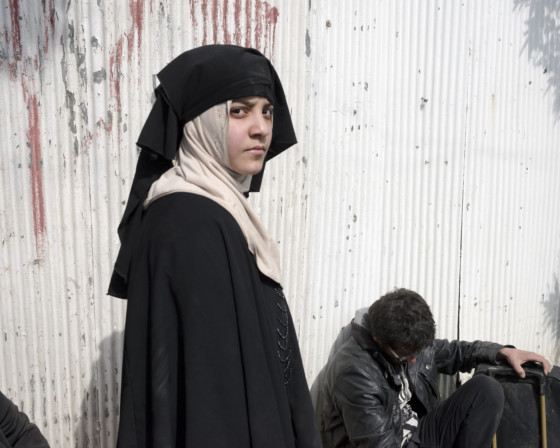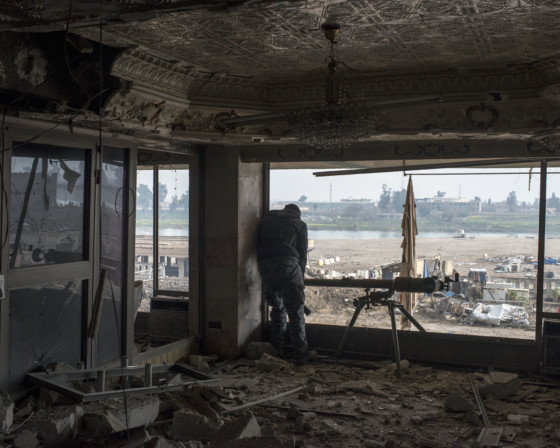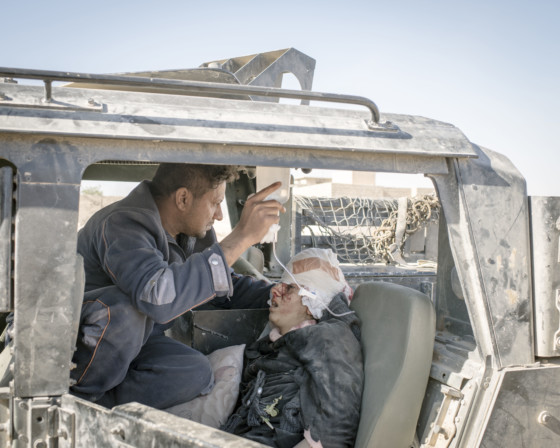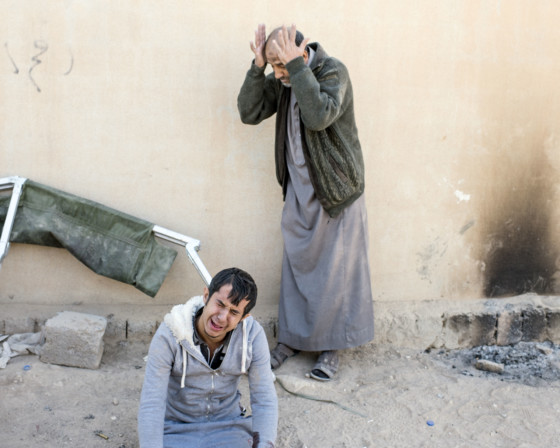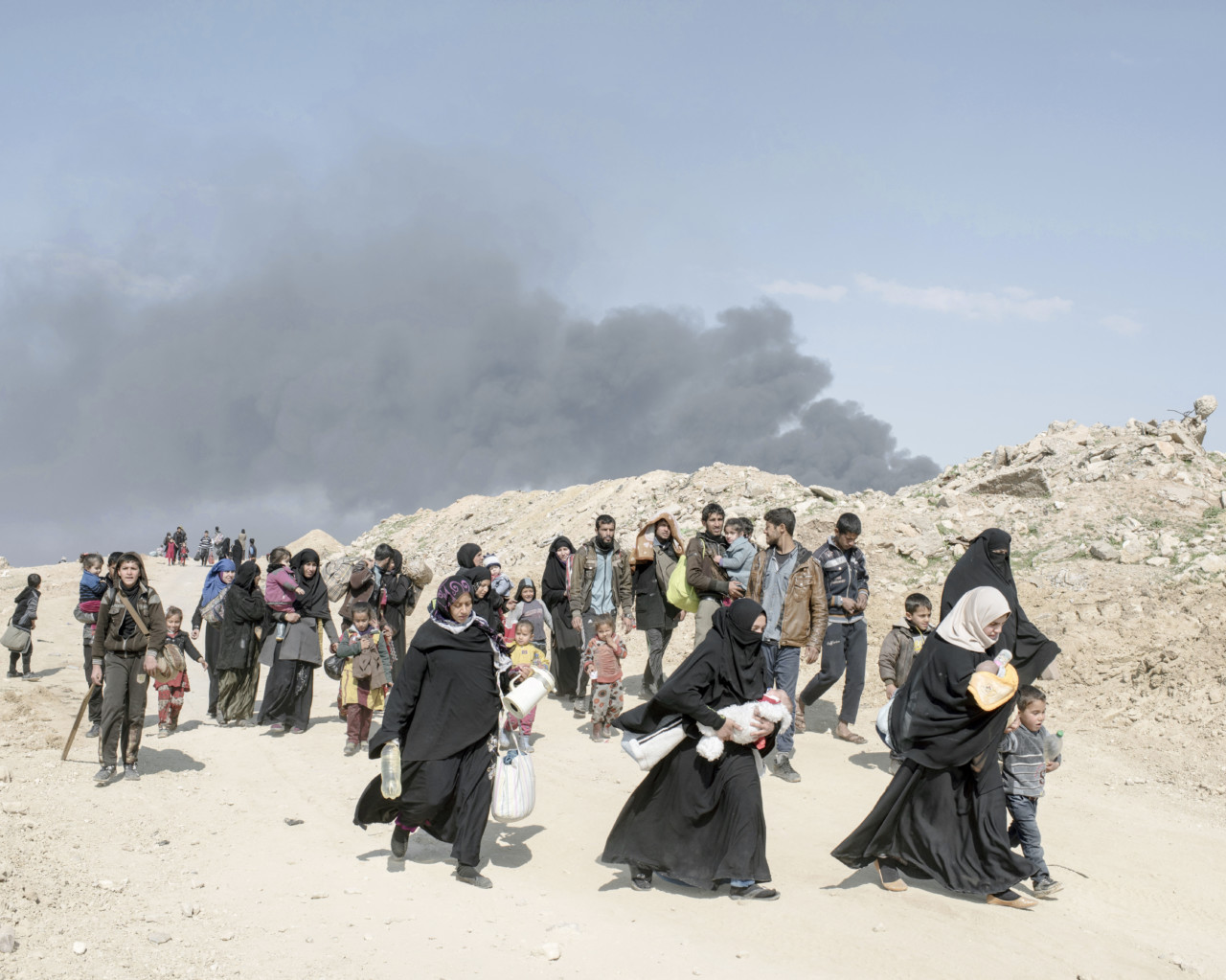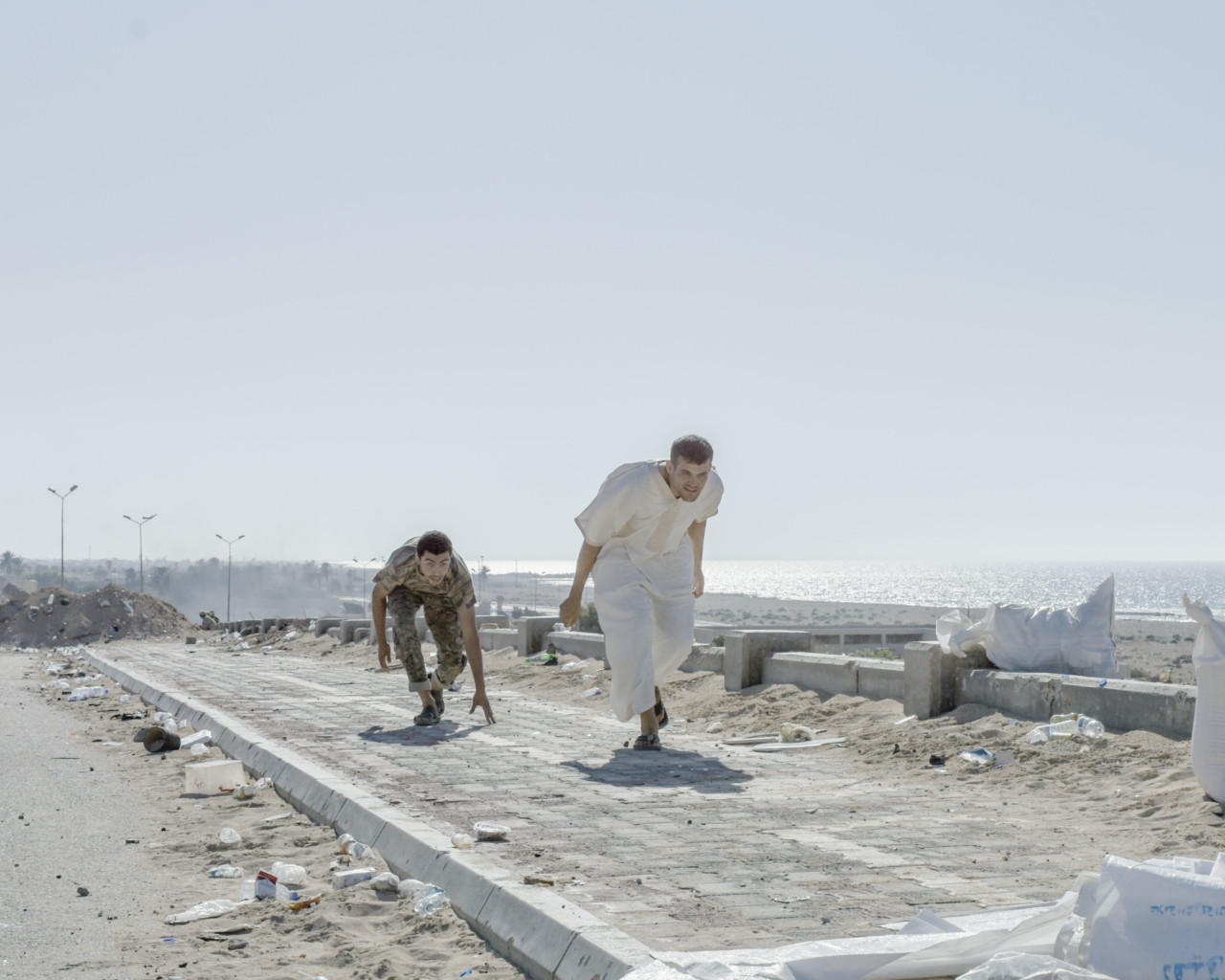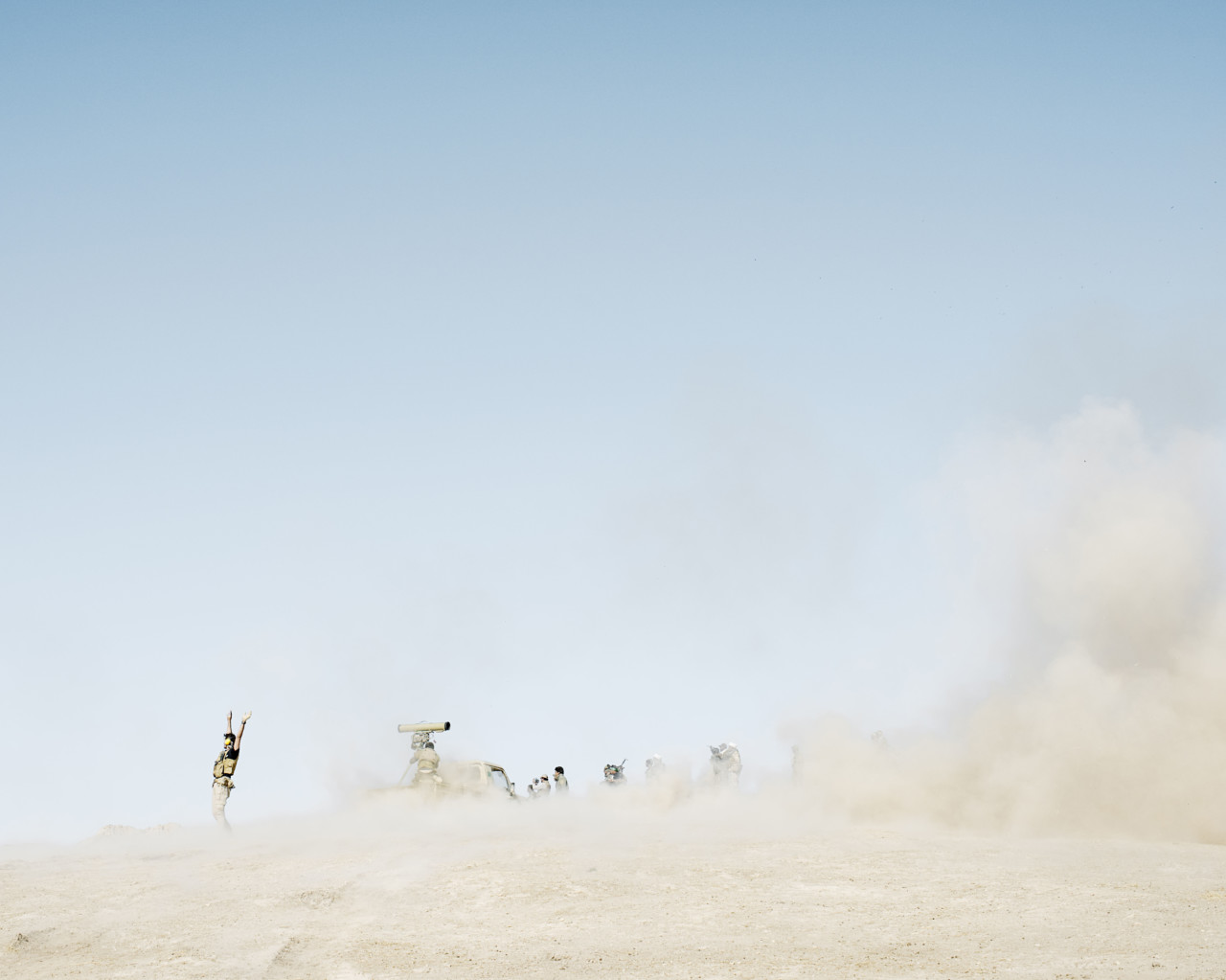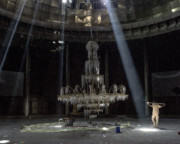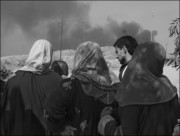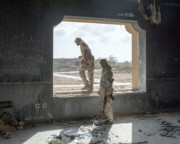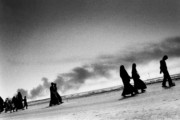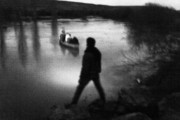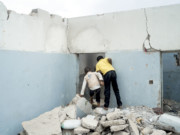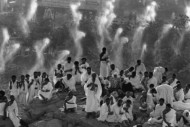The Collapse of the Caliphate
Lorenzo Meloni's work charts the crossborder fight against the Islamic State in an unprecedented curation debuting at Visa pour l'Image
In the same year that the self-proclaimed caliphate Islamic State came into existence – 2014 – Lorenzo Meloni began tracing its wars, grabs for land and loosening grip on cities it sought to take. From Kobane and Palmyra in Syria, through Sirte in Libya, and Mosul in Iraq, Meloni documented the brutal realities of the war: vast, empty deserts punctuated with haphazard moments of total chaos, charred ruins of broken former cities, brutal and indiscriminate violence, the civilians desperately trying to flee it, and those determined to stay. In September 2017, at Visa pour l’Image, an exhibition brings together work from these dispatches. For the first time, this long-form piece photojournalism is presented in one curation.
Meloni was present in Kobanî in Syria, near the Turkish border, when the Kurds held their ground against Islamic State, finally winning back their city in January 2016, before he headed to Palmyra. One of the only freelance photographers to photograph amongst the ruins of the ancient city, which had just been won back my Syria from the Jihadists, Meloni photographed the looted shell of the archeological site. Revisiting Libya, Meloni covered western-backed counter attacks attempting to take back control of Sirte, which had become the capital of IS in Africa.
In a text accompanying the exhibition, acclaimed French journalist Samuel Forey writes:
“The toughest resistance was in Iraq, where ISIS had first emerged, in particular in the ‘mother of all battles’ against the Jihadists in Mosul, now standing as the most sustained urban conflict in recent history. After extended fighting to regain control, Iraqi forces reached the gates of Mosul in November 2016.
Lorenzo Meloni’s coverage of all four battles presents a unique view of the same war from four angles, showing the fighting and devastation, the fury and silence, the silence engulfing places already devoid of sound: no voices, no traffic, no radio or television, no telephones ringing. Life has been driven away by war, and any brief interlude only brings silence, a deafening silence as deep and dark as the night. It will be a long time before light shines on these lands.”
Presenting an immersive way to experience Meloni’s photojournalism, the exhibition at Visa brings together photographs from each of these excursions, which, collectively, create a portrait of a long and complex conflict. Speaking to Magnum in 2016, French former journalist and founder of Visa pour l’Image Jean-François Leroy said, “I’m glad that people are telling me the stories in Libya, in Yemen, in Iraq and Syria, and I’m glad to see their work because without them I would not know anything about the world. We want to know what happens in our world.”


